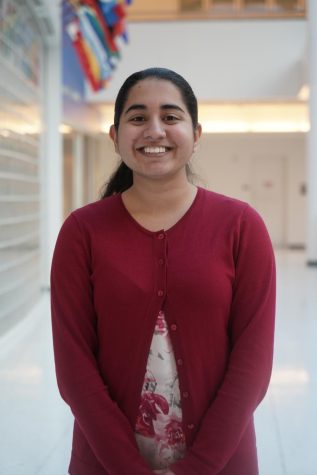Two female scientists jointly win Nobel Prize in Chemistry
October 16, 2020
In the 119-year history of the Nobel Prize, only five women have won in the chemistry category. Now, two female scientists on Oct. 7 made history by being the first women to jointly win the Nobel Prize in chemistry.
Washington D.C. native Dr. Jennifer A. Doudna and Dr. Emmanuelle Charpentier from France were awarded for their 2012 work with the gene-editing tool CRISPR-Cas9. Not only were they the first female scientists to receive the award together, but they also won without a male collaborator.
Their first paper, “A programmable dual-RNA-guided DNA endonuclease in adaptive bacterial immunity,” was published in 2012. Their research showed that CRISPR could be used to cut DNA in an artificial environment, such as a test tube or petri dish.
Now, eight years later, their written idea has come to life in the form of CRISPR-Cas9 and the technology has become more widespread.
CRISPR, which stands for clustered regularly interspaced short palindromic repeats, was a major breakthrough for genome editing. The tool allows bacteria to use parts of DNA from invading viruses, which are in turn used to create DNA segments called CRISPR arrays.
These DNA segments, “allow the bacteria to ‘remember’ the viruses” or any closely related ones, ” according to The US Library of Medicine.
“If the viruses attack again, the bacteria produce RNA segments from the CRISPR arrays to target the viruses’ DNA. The bacteria then use Cas9 or a similar enzyme to cut the DNA apart, which disables the virus.”
Now, the technology is being employed in finding cures for genetic diseases. In fact, so far results show that CRISPR is working. In summer 2020, Victoria Gray became the first patient with sickle cell disease to undergo CRISPR editing, according to National Public Radio. They also reported that even post the gene editing procedure, Gray is thriving.
Additionally, Doudna and a team of researchers have developed a test using CRISPR that can be used to detect COVID-19 in only five minutes. This test could be useful for countries with a high number of coronavirus cases who do not have enough resources to test the entire population.
Also known as “genetic scissors,” the CRISPR gene-editing tool has been used for agricultural means as well. Plant researchers use the tool to change crops’ DNA, making them pest and drought resistant, according to Scientific American. If successful, this would in turn lead to an increase in crop production and food worldwide.
This tool, however, has also caused controversy. The science community and the world were shocked when scientist He Jiankui announced he had used CRISPR on human embryos to produce two twin girls.
Though he claims to have done so to disable the gene for HIV, there is no way to know how his actions will impact the rest of the girls’ genes. Chinese authorities have barred him from practicing medicine however, the damage could already be done to the girls’ DNA along with the perception of gene and stem cell science as a whole.
Regardless of the controversy surrounding the use of CRISPR, scientists are praising Doudna and Charpentier for the achievements their research has brought so far.
“The ability to cut DNA where you want has revolutionized the life sciences. The genetic scissors were discovered 8 years ago, but have already benefited humankind greatly,” said Pernilla Wittung Stafshede, a chemical biologist at the Chalmers University of Technology.
Doudna and Charpentier have not only given the world a means of rewriting DNA, but also have rewritten history by breaking the male streak of Nobel Prize in chemistry recipients.








